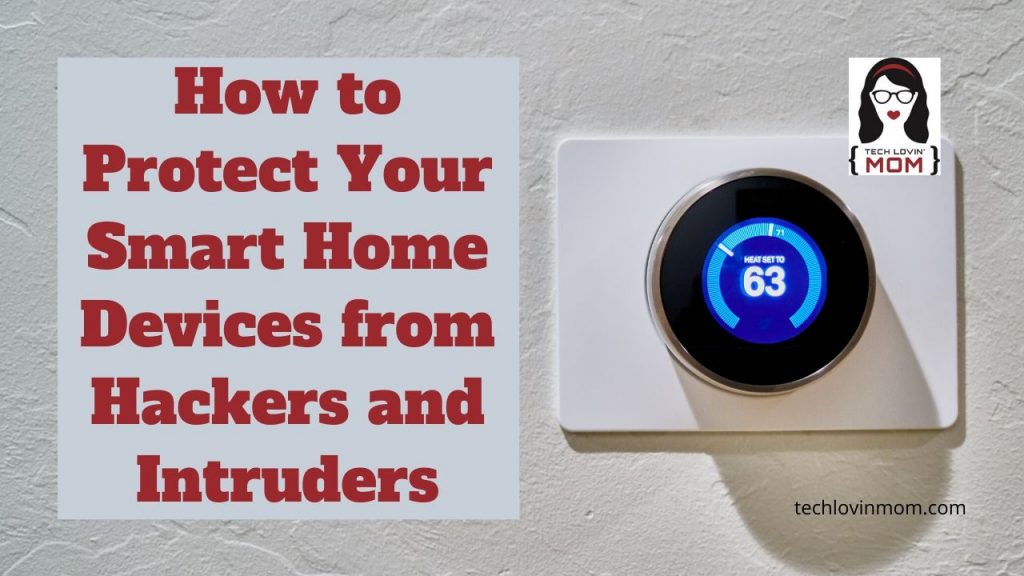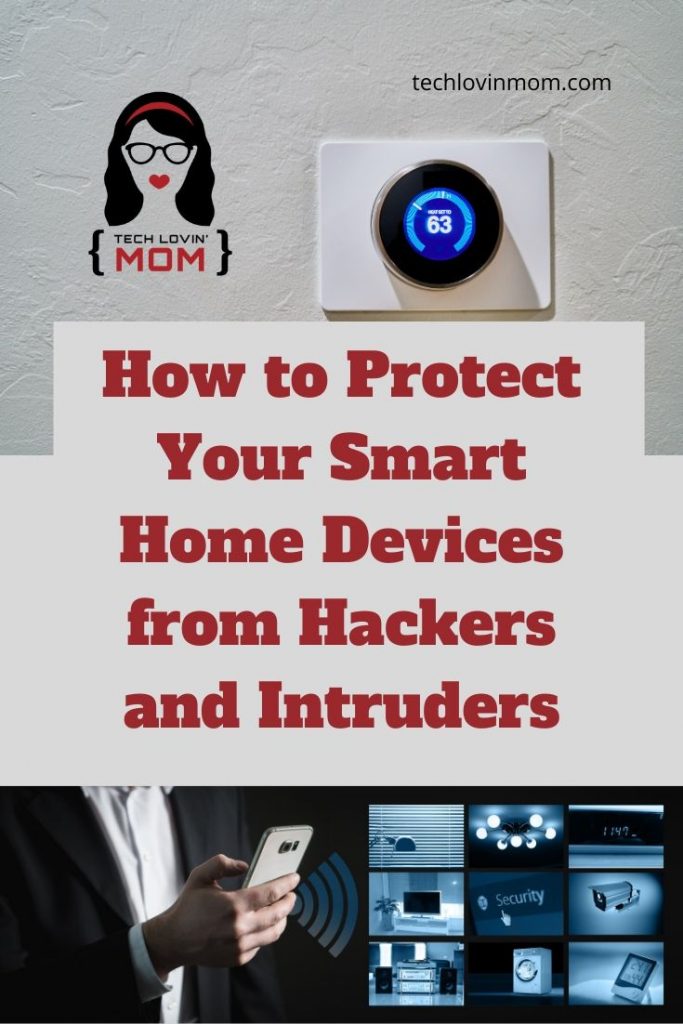
Smart Home Devices are becoming all the rage, but do you know how to secure your Smart Home Devices from hackers and intruders? Have you heard some of the horror stories from people that have had their smart devices hacked? And now there could be any number of entry points into your network – Smart TVs, security cameras, smart locks, thermostats, baby monitors, smart speakers like Echos or Google Homes, and much more. Hackers and intruders are using these devices as a way in for burglary, identity theft, financial exploitation, violations of privacy, etc.
This post uses affiliate links. If you click on my links, I may receive compensation at no extra cost to you. Read my disclosure policy for more info.
Hackers Access Smart Home Devices
I am starting to see more and more stories on Facebook and in the news lately that are enough to make you want to throw all your smart devices in the trash. Just this week, a story came out about someone that hacked into a Ring security camera that was installed in a little girl’s bedroom in Memphis, Tennessee. The hacker taunted and scared the 8 year old girl by talking through the camera. Back in January, a hacker accessed a Nest security camera and thermostat and a family found the hacker talking to the baby through the camera and the hacker had turned the thermostat up to 90 degrees. Do you remember the FaceTime Bug in iPhones that allowed eavesdropping through FaceTime? There are many more stories just like these.
So what can we do? No IT infrastructure can be 100% secured. Should we just get rid of all these smart devices? Or could we find a way to reduce the risk? That is what you must ask yourself. Is the convenience of the device worth the risk of a hacker accessing that device for nefarious purposes? If so, what can you do to minimize the risk?

Start with Your Network Router
The most important place to start when trying to secure your smart home devices is with your home network router. Think of your router as the front door to your home network. Make sure your router is from a reputable brand that has the resources to put important security measures in the router. Then it is time to make some adjustments to that router to secure your home network.
One of the most important things you can do is to change the name of the network and the password as one of the first things you do when you set up the router. The network name should not identify you or your location. Your password should be a complex password with special characters, letters, and numbers. It is also better to use phrases instead of just words with numbers. And do not use the same password for multiple websites, apps, and devices. Instead, use different passwords and get a password manager to help you keep track of all the different passwords. Some good password managers are Keeper, Dashlane, and LastPass among others. Make sure that you only buy devices that allow the default password to be changed. Hackers can easily look up any default passwords.
If your router has the capability, it is a good idea to hide your network from view. That way would be drive by hackers will not even be able to see your home network. If your router allows the creation of multiple networks, you could create a network for just your smart home devices. That way, if any of those devices are hacked, at least they are not on the same network as your computers, tablets, and smartphones that may have sensitive information like banking and credit card information. If you cannot create multiple networks, you could still use the guest network that many routers have for your smart home devices to keep them separate. If you do use the guest network, make sure it is password protected with a complex password.
Gryphon Mesh WiFi Security Router and Parental Control System
If you are in the market for a router, get one that has powerful security built-in. I recommend the Gryphon Mesh WiFi Security Router and Parental Control System. Gryphon has advanced Internet security using AI intrusion detection to protect your smart home Internet-connected devices. It has 24/7 monitoring against hackers, intruders, and malware. Gryphon gets automatic security updates as well as updates of the threat database from ESET security for the most up to date protection available.

Setting up Smart Home Devices Correctly
When you add a new smart home device to your network, make sure to register the devices with the manufacturer and keep them updated with software and firmware updates. Some devices will let you opt-in for automatic updates, so if that is an option, make sure to turn it on. The software and firmware updates will fix any bugs, vulnerabilities, and security issues that are discovered in the devices. It is also a good idea to reboot them occasionally. Rebooting will sometimes pick up updates that you may have missed.
When you are setting up the devices, make sure to carefully go through the settings on each device. The default settings for privacy and security may need to be changed. Also, make sure to disable any features that you may not need.
Make sure you use the two step or two factor authentication setting if it is available. This is a one time code that is sent to one of your other devices like a cell phone, tablet, or computer. This code then needs to be entered into the Smart home device before any changes can be made. That way if a hacker tries to break in with a password, they will not have the code necessary to get into the device. Always turn on two step authentication when it is an option.
If you ever decide to get rid of a smart home device, no matter if you are selling it, giving it away, or throwing it away, you should always reset it back to factory settings. If you are throwing it away, you could always smash it into small pieces before throwing it in the trash.
Opt Out of Amazon Sidewalk
Amazon Sidewalk is a new feature that Amazon will be enabling soon for Echo and Ring devices. Amazon has created this shared network as a way for devices like Echo and Ring to extend coverage in case someone’s network goes down. It would allow the devices to keep working and stay connected by using a small portion of Internet bandwidth from neighbors that also have Amazon devices with Sidewalk enabled. While this may sound like a good idea, the problem is that your neighbors may not be doing as good a job as you at keeping their network protected. At this time, I cannot recommend participating in Amazon Sidewalk when it goes live. I have already opted out. If you would also like to opt out, open your Amazon Alexa app and chose “More” in the bottom right corner of the screen. Then choose “Settings” and “Account Settings” and then “Amazon Sidewalk”. Scroll to the bottom and turn off Amazon Sidewalk. For more information, check out Gizmodo.com’s article HERE.
Hopefully, with these tips, you will minimize your risk while using smart home devices. Make sure to always weigh the risks of a possible hack against the convenience the smart home device provides. A little extra work will go a long way in minimizing those risks.
Do you use smart home devices? Which ones do you now feel you could not live without? Tell us in the comments section below.

